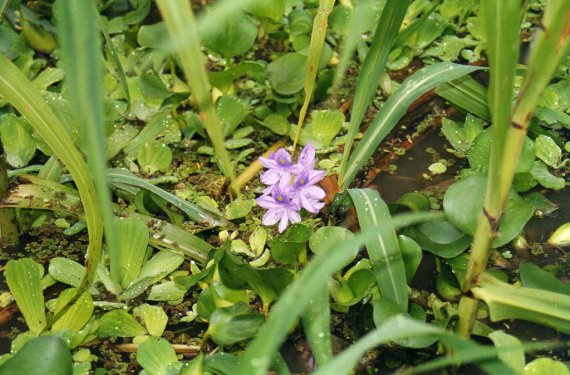Photo: Flickr
Many lakes and rivers in Ethiopia are covered in a blanket of green leaves and purple flowers. Water hyacinths may be beautiful, but they grow quickly and are difficult to keep under control. People who live off fishing or farming are stuck with the consequences, as a thick layer of hyacinths makes it impossible to fish and clogs up the irrigation channels. Luckily, the weevils Neochetina eichhorniae and Neochetina bruchi can be used as natural enemies of the water hyacinth. Firehun Yirefu Gebregiorgis recently received his doctorate for his study into the management of the water hyacinth in Ethiopia using these weevils.
Reproduction
Gebregiorgis discovered the two weevil species can decrease the reproduction of the water hyacinth by 72 and 66 percent, respectively. Larvae of the weevils dig tunnels in the leaves, and the grown beetles eat into the plants. In other countries, such as Uganda, Kenya and Tanzania, the weevils have been used for a while. However, the beetles thrive to a lesser degree in areas with a variable climate. Another solution is therefore used in South Africa: fungal pathogens that impede the growth of water hyacinths.
Pesticides
Gebregiorgis states that a combination of the weevils and the fungus Alternaria alternata can even lead to a reproductive suppression of 85 percent. The fungus uses the partially eaten leaves to grow upon. Until now, neither of the natural enemies has been used to fight the water hyacinth in Ethiopia. Instead, inhabitants remove the parasitic plant by hand or with excavators. Pesticides are used in some areas, although those are expensive and tend to pollute.
Balance
Paul Struik, Gebregiorgis’ promotor, says the result of the research has been received positively by the Ethiopian farmers and government. ‘But to be able to truly use the beetles, they will first need to breed large numbers of weevils’, he explains. They do not need to fret a beetle infestation, as the weevils eat little else than water hyacinths. As soon as those run out, the beetle population will decrease and a natural balance will arise.

